| Umělec 2007/4 >> INTERVIEW WITH ISRAEL MORA | Просмотр всех номеров | ||||||||||||
|
|||||||||||||
INTERVIEW WITH ISRAEL MORAUmělec 2007/401.04.2007 Ruth Estévez | interview | en cs de es |
|||||||||||||
|
In the last years, Israel Mora’s artistic endeavors— mostly events and performances—have straddled the line between reality and simulacrum, both in form and content. Notably influenced by Mexico City (where he lives), Israel’s work functions like a representation of an underground society or counter-culture. Using his body as a site from which to work, Israel’s staged situations take on new dimensions of performance. Israel is an artist who creates works both individually and collectively with groups such as the Workshop for Visual Documentation, a performance group that has figured prominently in the artistic landscape of Mexico City for almost twenty years.
R.E. The work at the beginning of the nineties seems to follow a double road. On the one side there are the very formal installation pieces, maybe influenced by that first wave of technological advance in the artistic world. But then, however, there is a much more intimate kind of work that seems to be represented through your performances. Was this a conscious process to find a determined work strategy? I.M.I suppose there is a frontier of a formal problem. There is an influence from architecture and sculpture, of unfinished pieces formed through an explorative technology, with very aseptic elements, which was a way for me to depart from painting, something that I needed to do. For seven years, I was working with the members of the Workshop for Visual Documentation (TDV in Spanish)1 from an anonymous perspective, following the ideals of the group. Even though for a long time the work of the Workshop was a continuation of the work by the artistic groups that had been successful in Mexico during the seventies with a profile of social protest facing a much more individualist kind of art, I think that with time, the Workshop become some kind of NGO that knew how to deal with the institutions, but had abandoned any relationship with art, favoring social activism, an idea not shared by me. I painted a lot during that period, but somehow, I always maintained a parallel personal exercise that in reality has nothing to do with the work developed in the Workshop. Sometimes, I feel it was some kind of creation-survival relationship because, of course, I was being paid for working in the Workshop, some kind of working wages. Eventually, I became tired of the anonymity, not so as to became well known as an artist or place myself within the national mainstream, but instead, to abandon those social themes that had turned paternalist, in search of more intimate experiences that help me to filter in a more personal way the society I wanted to continue representing. R.E. That leap then, from painting to performance was almost a desperate act to find a new theme of representation? I.M.In a way, yes, but in reality I always maintained a parallel line in my personal work, quite centered in the performance activity. The leap from painting to my first works in the nineties, was in fact through all these mathematical and cold elements, as some sort of optical or kinetic art, around the installation concept. I did all this through the abuse of certain materials such as the fans, neon lights, PC screens… Curiously, the performances or events were always parallel to these installations and they did have a much more intimate and also painful point. I planned all my depressions, all my crises in a kind of ambiguous way. I had never imagined myself without painting, but all of a sudden, everything became something else. There is a moment I realized that the performance was a much more immediate resource, more in line with my needs. R.E. In 2001 you were in residence at Canada’s Banff Centre for the Arts, as a result of a scholarship granted to you by the FONCA. The result of this residence was quite a complex performance you called Level 7. For several days you searched for determined locations to jerk off and bottled the semen in seven tubes that, as I understand it, you dedicated to different members of your family. What was the intention behind this process? Was it an attempt to vindicate your identity with an idea of repression within a different context? I.M.In a certain way, my intention was also to investigate the condition of an individual in a different contexts and how he regulates facing newness. In this case, I was far from home, from my own circumstance and I used the semen as a representation of survival, an attempt to remain, of holding my personal identity and also as a Mexican, in spite of it being full of conflicts. The fact that every tube was dedicated to a member of my family had also a lot to do with this process of indidviduation. Somehow, the concept of family in Mexico is still very strong and in some cases, it represents a kind of pressure, moral I would say, that becomes alienating.As such, it is not an not homage to them, but within this cartography of work that I place in my own body, they are exquisite referential points, reflection and analysis engines of my own constitution and my way of understanding art. R.E. It seems that your body has become the support for most of your works. Not only the individual body, but as an idea of the vulnerable body, able to suffer without measure, to represent social situations. In your last two works, Marca Registrada (Trade Mark) in Rome’s MUCA, and Mickey3 in the Chopo Museum of Mexico City, you use your body as some kind of stage. What’s simulacrum and what’s reality in these representations? I.M.In Marca Registrada (Trade Mark), I placed myself for the duration of the inauguration of the exhibit, under some kind of stair that was at the entrance to the center. Under me, there was a glass mattress that embedded in me not only because of my own weight, but also by the pressure made by the spectators who didn’t know I was down there. The body became basically a map. Understanding it as a simulation or a representation. What I was trying to do was to carry the space of the gallery, using my own body as a support, an activity that, morbid as it seems, is part of the economic system of a certain social class in our country. In this attempt, the glass pieces wouldn’t lose their symbolic value while they were also inflicting me with real damage. R.E. But then is there also the idea of self-flagellation? I.M.The bites that V Acconci took in his time on Trademarks (1970), or the result obtained by Burden in Shoot (1971), characterized as hyper-real, the marks, the tracks became the support of the memory and its relation to the past. Both in Marca Registrada (Trade Mark) as in XXXXXX I don’t pretend to give priority to the exploration of the body using transgression and pain, but instead, simulation and effects. Definitely, it is the appropriation of an object or a situation, made aesthetic as a modified happening precisely in the attitude and personal livelihood of the act itself being repeated by the artist in many different circumstances. At the same time, the fakirs use that same act to obtain money on the streets of Mexico City, in a gallery, becomes a sentimental exaggeration, foreseeable and even Kitsch. R.E. I realize that in this simulacrum you stage in a consequential real way in your body there is always an attempt to represent situations related to the social problematic of Mexico, more concretely, with its underground economic activity. Many contemporary artists such as Teresa Margolles, Daniella Rossel or Santiago Sierra, use real situations, although theatrical or detached from reality to face precisely this status quo situation that hides behind the misery that seems to veil cities such as Mexico City. What relationship do you establish with reality within that simulacrum process? I.M.The destiny of my work every time is to incorporate the relations between politics and economy and the relation with identitymore openly but at the same time very subtly; once at a conference, I asked Abraham Cruz Vellegas if being a Mexican was an accident you have to face. The great question about being Mexican and identity, still, continues to manifest itself in the formal aspects of my work. It seems to me that I’m still preoccupied by the exaltation, fascination and at the same time, disgrace of being Mexican. I must accept that the collective imagination of Mexico surprises me but above all, the economic strategies of survival that many times we are forced to create. Economic strategies that, in spite of being a consequence of the economic imperialism we are living present also an alternative, a counter attack, even when it serves only to profile the terrible of the situation. In Marca Registrada (Trade Mark) the artist as an individual violent his body to the misery he lives, a crude revenge against himself caught between the speculation of the spectator and the exhibition of his disgrace, faced with courage and subjugated at the same time.
01.04.2007
Рекомендуемые статьи
|
|||||||||||||
|
04.02.2020 10:17
Letošní 50. ročník Art Basel přilákal celkem 93 000 návštěvníků a sběratelů z 80 zemí světa. 290 prémiových galerií představilo umělecká díla od počátku 20. století až po současnost. Hlavní sektor přehlídky, tradičně v prvním patře výstavního prostoru, představil 232 předních galerií z celého světa nabízející umění nejvyšší kvality. Veletrh ukázal vzestupný trend prodeje prostřednictvím galerií jak soukromým sbírkám, tak i institucím. Kromě hlavního veletrhu stály za návštěvu i ty přidružené: Volta, Liste a Photo Basel, k tomu doprovodné programy a výstavy v místních institucích, které kvalitou daleko přesahují hranice města tj. Kunsthalle Basel, Kunstmuseum, Tinguely muzeum nebo Fondation Beyeler.
|







-Marca5.jpg.detailThumb.png)



-Marca5.jpg.thumb.png)














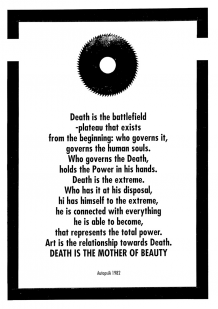




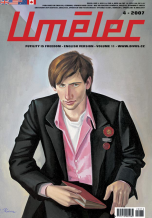
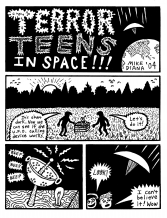
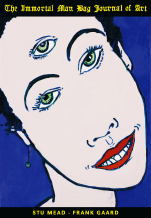
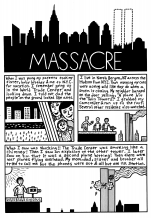


 We Are Rising National Gallery For You! Go to Kyjov by Krásná Lípa no.37.
We Are Rising National Gallery For You! Go to Kyjov by Krásná Lípa no.37.
Комментарии
Статья не была прокомментированаДобавить новый комментарий